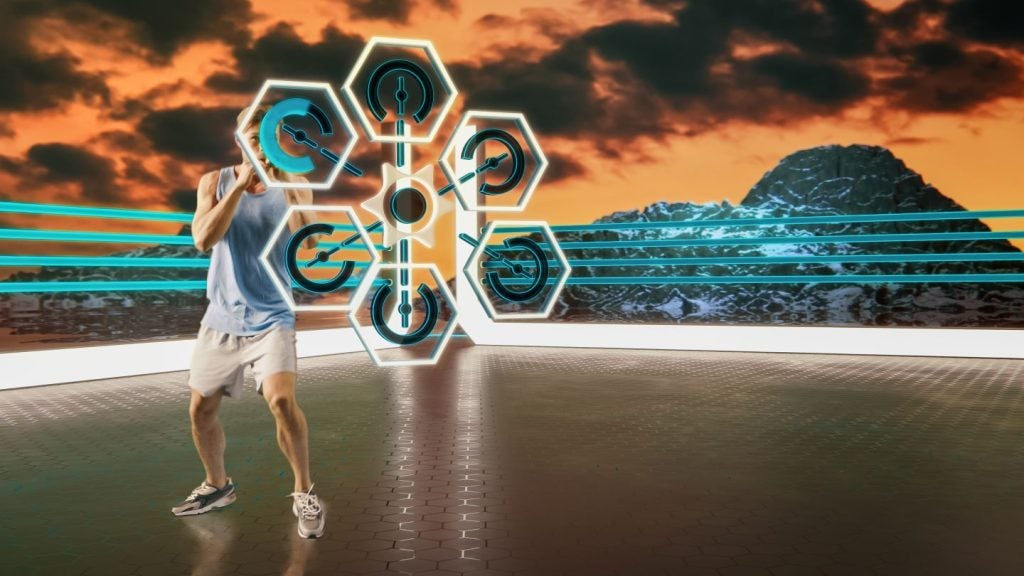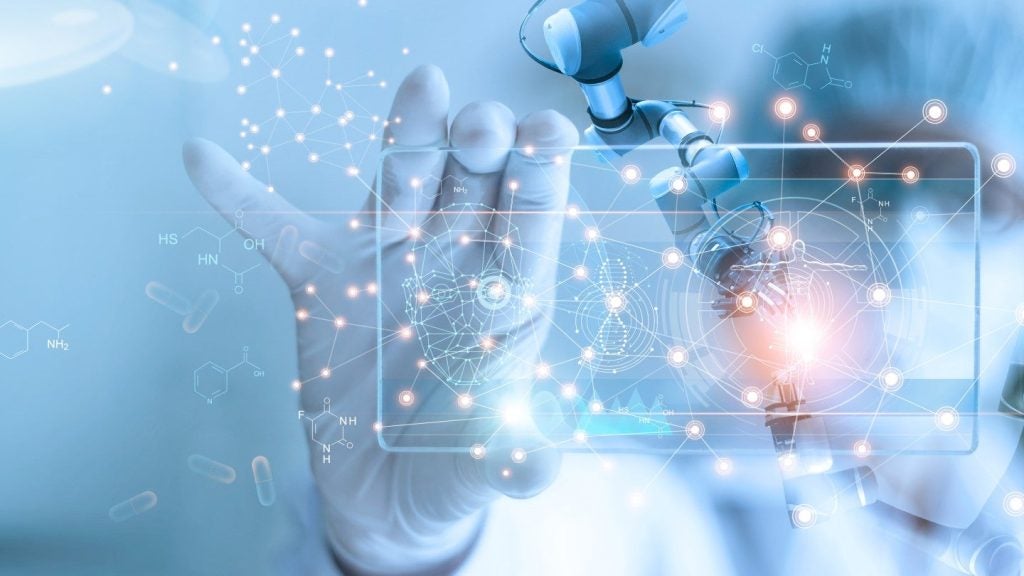
The combination of artificial intelligence (AI) and robotics is rich in potential as new uses become apparent across a range of sectors. This has been highlighted with Boston Dynamics’ Spot, the robotic dog that can carry out both manually controlled and autonomous tasks.
Described by Boston Dynamics as “a dynamic sensing platform”, Spot is able to complete a range of tasks without human input, such as inspection, research, hazardous response and maintenance. It can manage situations independently, including charging itself, replanning routes and self-righting if it falls.
However, the arrival of AI represents a new frontier in robotics, with the ability to push Spot from an autonomous robot to an intelligent one, and Boston Dynamics is preparing for new technologies to change the industry.
Indeed, GlobalData’s recent Thematic Intelligence: Tech Sentiment Polls Q3 2023 report found robotics to be viewed as the most promising technology among a group of six of the most significant. Among 368 business respondents, 72% felt it would live up to all of its promise while a further 18% felt it was hyped but could see a use for it.
Spearheading the union between AI and human input, robotics provider Xtend recently won the Open Innovation Challenge to become Spot’s brain. Its XOS operating system is being used to enable the robot to make decisions.
Xtend beat 500 other applicants to win the competition alongside two other complementary solutions, DLR and 1MRobotics. Announced in July 2023, they are working on the project with Boston Dynamics, Kia, Hyundai Cradle and UPS Israel.
How well do you really know your competitors?
Access the most comprehensive Company Profiles on the market, powered by GlobalData. Save hours of research. Gain competitive edge.

Thank you!
Your download email will arrive shortly
Not ready to buy yet? Download a free sample
We are confident about the unique quality of our Company Profiles. However, we want you to make the most beneficial decision for your business, so we offer a free sample that you can download by submitting the below form
By GlobalDataXtend’s machine operating system
Xtend has greater ambitions for XOS, though, and says it “aspires to be the Windows or Android of the market” with the platform. The hardware-agnostic system is already employed for robotic technologies in the security and enterprise sectors as the company works to “close what we call the autonomy gap” in the field of human-machine teaming.
Matteo Shapira, co-founder of Xtend tells Verdict’s parent company GlobalData that Spot represents the ability to take AI to the level where it can do upwards of 90% of a delivery job, such as transporting a package to a home or an office.
“We can practically create feasible robot delivery, product and service and put it on the market relatively fast,” he explains. “This is something we’re very excited about. We’re just at the precipice of it. We’ve just started this collaboration. The ability to integrate humans in critical juncture, really sort of feels like the last missing piece of the puzzle.”
Xtend also provides licenses to its Xtend Enterprise cloud-based platform services and Xtend Security solutions for homeland security and private security and defence markets.
There has been significant interest in the potential of autonomous robots in defence. Xtend’s partners include the US Special Forces, the US Department of Defense and the Israel Defence Forces. However, co-founders Aviv and Matteo Shapira hope to see the operating system employed in robotics across many more sectors over time.
AI and robotics
Explaining why Xtend came about, Aviv says: “We started as a software company, about five years ago, and we found that the market is very, very fragmented. We decided to actually go vertical in order to actually mature and make our operating system fit for purpose.
“We opened up a security company and an enterprise company, and we just started to go to market with our solutions. The first thing we did in the security market is replace soldiers, police officers, firemen and search and rescue personnel with robots and drones.”
As AI improves so will the capabilities of robotics, as technology enables machines to make increasingly more complex decisions and carry out actions without supervision, even in dangerous, high-pressure situations.
Xtend is looking to an AI-driven future, but its operating system’s current priority lies in supporting human and machine cooperation for smooth-running missions across dangerous sectors.
Aviv explains: “When AI and autonomy are not really there and not really capable of doing and completing the mission, we have a human supervisor. If I’m a fireman drone, and I’m going into a burning building, I will be able to go inside the building, I will be able to find people. But let’s say I encounter a dilemma – I need to go left or right, but I’m not sure where to go – I will ask my human supervisor: ‘What should I do?’”
Matteo expects that the necessity of human involvement in the robotics industry will continue to change: “For us, there’s a big discussion on how the big AI revolution is going to affect or make an impact on what we do in Xtend. We can actually learn from the operators and make the robot just as smart – in terms of decision-making – as the professional operator
“We’re closer and closer to having completely autonomous firemen and first responders, search and rescue workers, and even construction workers in the future. And, basically, every function that we can think of that we would maybe want to necessarily delegate to a robot, which is very exciting.”
A collaboration between human operators and intelligent robots enables machines to perform tasks with the support of human input where necessary. So far, Xtend has seen early success in two industries: security and enterprise.
Aviv continues: “Today we focus on these two markets, the security and enterprise markets, because they’re very big in early adaptive. Some markets are not that adaptive to drones and robots. For example, it’s very hard to get drones into tourism because of regulations.”
Security and enterprise
Within security, XOS has the potential to reduce the risks to an operator of military technology by providing a remote solution. This makes the technology valuable for dangerous offensives, and there is a clear market.
Xtend received a $20m contract from the Ministry of Defense of Israel to develop and supply a multi-drone operating system in January 2023. This followed an $8.9m deal with the Pentagon’s irregular warfare office in October 2022. That was the company’s sixth contract with the Irregular Warfare Technical Support Directorate, including one in May 2022 for hundreds of Wolverine Gen2 drones, purchased for the US government.
Speaking specifically about the operating system, Aviv explains: “Whatever they do, they do it with our operating system. Now, when it comes to offensive drones, we’re not selling weapons as a company. This company is selling software – that’s essentially what we do. We give our customers the ability to install applications, both hardware and software applications.
“We don’t really know what they do with the drones and robots. I can tell you that it’s very similar to the software development kit (SDK) you have in your phone, or to any SDK or application programming interface (API) in the world. You can basically install different types of applications and payloads that meet the minimum requirements. That is where we are. We’re trying to assert the depths, we’re trying not to deal with ethical problems while being very generic.”
NDAA drone compliance
It was announced in June that the company’s Xtender, Wolverine and Griffon drones had achieved full compliance with the US’ National Defense Authorization Act, ensuring it could continue to deal with defense departments. Xtend said it would be increasing US-based production as demand continued to grow from the US Department of Defense and the wider US government technology community.
Aviv notes how the drones can be used in rescue missions as well as offensives: “We have to look at it more as saving lives. We participated in the search and rescue efforts in Turkey earlier this year. We found a sixty-year-old woman, who was underneath this rubble – 30 minutes later, she was saved. Also, another seven-year-old girl who was hiding in the kitchen somewhere. So, on the ethical side, we are on the good ethical side.”
This was Xtend’s first rescue mission and was executed earlier this year following the earthquake in Turkey. The success has opened up a new market for the company and draws attention to the potential of robotics and AI to save lives.
“We understood that we have a lot of power to actually impact search and rescue in general,” says Aviv. “We’re now considering it as a new market for us. It’s incredible. There’s a lot of things we can do. Not only because of our drone and robotic experience, but because integrating different types of technologies into one system would help people on the ground understand where the people are, and how to save them.”







